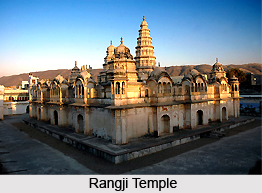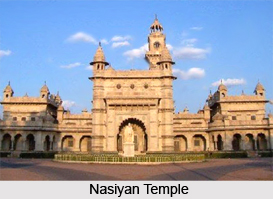 Pilgrimage tourism in Ajmer district comprises visiting the various beautiful religious monuments and places of worship located here. The Dargah of Khwaja Muinuddin Chisti is one of the most revered pilgrimage sites in all of India. Apart from this there are a number of places of pilgrimage tourism located in the district of Ajmer. These include places of both Hindu as well as Muslim worship.
Pilgrimage tourism in Ajmer district comprises visiting the various beautiful religious monuments and places of worship located here. The Dargah of Khwaja Muinuddin Chisti is one of the most revered pilgrimage sites in all of India. Apart from this there are a number of places of pilgrimage tourism located in the district of Ajmer. These include places of both Hindu as well as Muslim worship.
The various places of pilgrimage tourism are discussed below:
Dargah of Khwaja Moinuddin Chisti
One of the most revered places of pilgrimage in Ajmer, and in fact in all of India, is the Ajmer e Sharif, Dargah of the great Sufi Saint Khwaja Moinuddin Chishti. Ajmer is also known as `Madinatul Hind` or the Madina of India since it has been touched by the holiness of the great seer. Devotees from all over, belonging to different sects and even different religions, visit the dargah to pay their respects. Every year, on the occasion of the Urs festival, the followers of the saint from all parts of the world gather here to pay their respects and seek the saint`s blessings.
Sacred town of Pushkar
Pushkar, situated 11 kilometers to the north-west of Ajmer, is a sacred town for the Hindus. It is believed that Lord Brahma performed a sacrifice at this lake on Karthik Purnima, making the place holy. The Brahma temple at Pushkar is dedicated to Lord Brahma. This is the only existing temple dedicated to Lord Brahma and was constructed in the 14th century. It stands on a high plinth with marble steps leading up to it. A beautiful carved silver turtle sits on the floor facing the sanctorum. The marble floor around the silver turtle is embedded with hundreds of silver coins, with donors name engraved on them. The devotees believe that a dip in the waters of the Pushkar and worship in the temple ensure salvation. Consequently, a number of pilgrims flock to Pushkar to observe the ritual on Karthik Purnima or on either of the four days preceding it. There are a number of other temples located here.
 Rangji Temple
Rangji Temple
The old Rangji temple was built in 1823 by Seth Puran Mal Ganeriwal of Hyderabad. The temple has been built in a unique confluence of Dravid, Rajput and Mughal architecture. New Rangji Temple is a most graceful construction, built in the south Indian style of architecture.
Savitri Temple
The Savitri Temple is the temple of Lord Brahma`s first wife. It is located on the hill behind the Brahma temple and one has to climb a long series of steps to reach the shrine. It commands a panoramic view of the beautiful lake and the picturesque surrounding of the villages. The Saraswati temple is also found located in Ajmer district.
Nasiyan temple
The Nasiyan red temple is a Jain temple of the Digambara sect. The place is also popularly referred to as `Soni Ji Ki Nasiyan`. Lying adjacent to the main temple is a double-storey hall. Depicted here in the hall are a large number of large- gold-plated wooden figures which depict legends from Jain mythology. The entire hall is richly adorned by glass mosaic, precious stones, gold and silver work.
Nigambara Peeth
The Nimbarak Peeth was by the Bhakti chief of Khejarli, Shri Sheoji and Gopal Singh Ji Bhati. It was founded in 1520 following the instructions of his holiness Shri Nimbarkacharya Peethadhishwara Shri Parashu Ram-Devacharya Ji. The temple has been so designed that the deity is visible for darshan the moment one enters the main gate. The Sanctum Sanctorum has been built in a way that the moonlight of the moon of Sharad Poornima touches the lotus feet of the idol of the Lord at 12.00 pm. In the Jagmohan of the main temple the pillars of marble are exquisitely ornamented and the centre of these pillars is transparent.
Taragarh Fort
Taragarh fort gives a magnificent view of the city of Ajmer. The fort`s principal strength lies in the severity and ascent of the hill. This fort also houses the dargah of Miran Saheb who was the governor of the fort.






